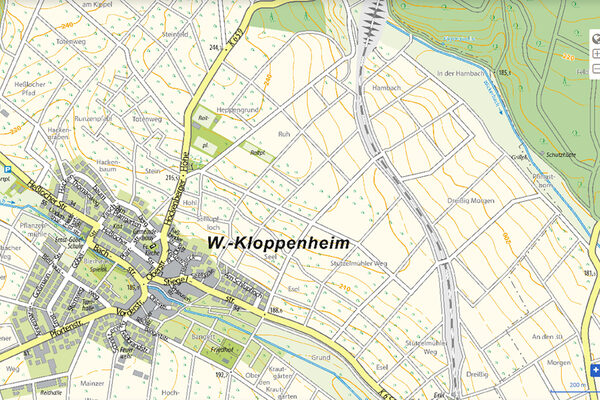Kloppenheim: Clopheim on the hill
The history of Kloppenheim dates back to the sixth century. In 1965, archaeologists discovered Franconian graves during construction work, which indicated an early settlement.
Early settlement
Kloppenheim was first mentioned in 927 in a deed of gift under King Henry I. The name "Clopheim" means residence on a rock or hill and dates back to the Frankish period.
Middle Ages and early modern times
In 1355, Kloppenheim belonged to the Sonnenberg dominion and changed hands several times before being sold to the von Bicken family in 1488 and later becoming part of the Wiesbaden dominion. The Thirty Years' War and the plague claimed many victims in the region.
Reformation and development
In 1543, the Reformation brought the Protestant confession to Kloppenheim. The first Protestant pastor was Gerlach Bidencap. In the 16th century, a mill was built which contributed to the economic development. The first school was founded in 1578.
Agriculture in transition
Kloppenheim originally lived from fruit and grain cultivation and dairy farming. In 1819, Kloppenheim was home to 49 farmers, 27 day laborers, three distillers, two millers, a carpenter, etc. This trade structure changed considerably by 1870: many Kloppenheim residents found work in Wiesbaden, Mainz, Höchst or with the Reichsbahn. By 1930, only a third were still employed in agriculture. With the first tractor in 1951 and increasing mechanization from 1960 onwards, the farm horses disappeared. Agriculture had changed fundamentally.
Wars and upheavals
The French Revolutionary Wars and the occupation by French and Prussian troops in the 18th and 19th centuries led to destruction and hardship. In 1797, the parish records were burned. In 1813, further damage was caused by the retreat of French troops and the arrival of the Cossacks. From 1866 to 1928, Kloppenheim belonged to the district of Wiesbaden.
Development after the Second World War
Kloppenheim was incorporated into Wiesbaden in 1928. The village was badly hit during the bombing of Wiesbaden on February 2, 1945. After the Second World War, Kloppenheim grew in particular due to the settlement of displaced persons, especially from the Czech Republic. In the following decades, Kloppenheim underwent extensive reconstruction. In the 1970s, important infrastructure projects such as the sewerage system and the expansion of roads were completed.
Kloppenheim today
Kloppenheim preserves numerous historical elements, including the old church, which was built in the 17th century. Today, it is an important landmark of the district. The museum in the restored Heimatscheune also displays historical pictures and objects. Wedding ceremonies take place here - right next to the newly renovated old town hall - in a unique atmosphere.
Despite its development, Kloppenheim has retained its village charm. A strong association structure, led by the local heritage association, characterizes the lively community life. Various local organizations promote exchange and strengthen social interaction between the residents.
Historical highlight
In 1927, Kloppenheim celebrated its 1,000th anniversary, which was celebrated with a big party and thousands of people.
Are you interested in Klarenthal?
Visit the virtual district museum of the voluntary working group and discover more about the multifaceted history of Klarenthal.
